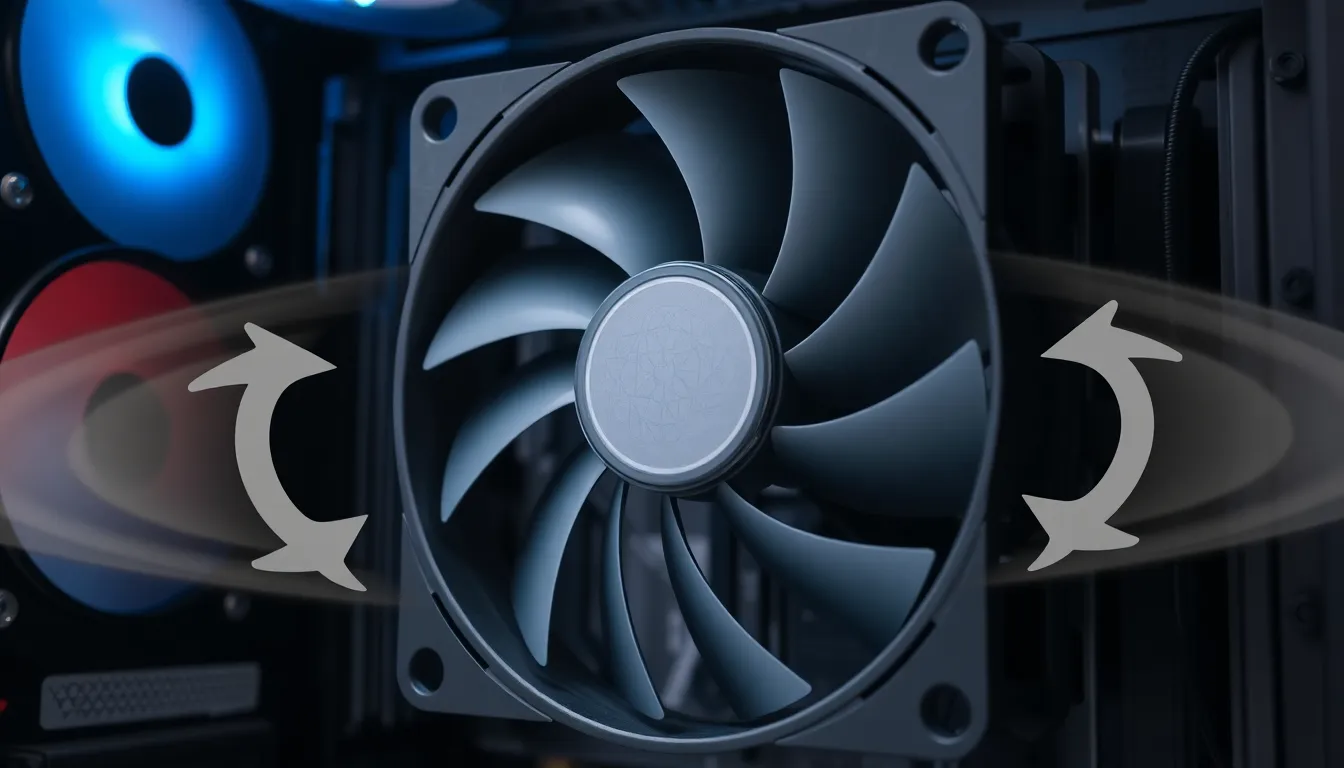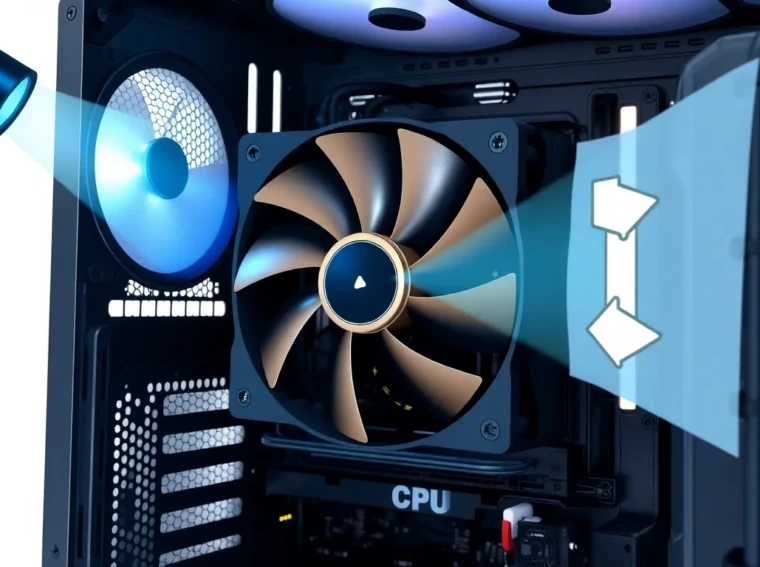When it comes to PC building or maintenance, knowing which way a fan blows can be a game changer. Imagine installing a fan only to discover it’s working against you, like a stubborn cat refusing to move off your keyboard. Proper airflow is crucial for keeping components cool and your system running smoothly.
How To Tell Which Way A PC Fan Blows
PC fans play a crucial role in maintaining optimal airflow within a computer system. Recognizing fan direction is vital for efficient cooling and overall performance.
Types of PC Fans
Several types of PC fans exist to cater to different cooling needs. Case fans circulate air within the case, ensuring components receive adequate ventilation. CPU coolers contain specific fans that concentrate on cooling the processor. Graphics card fans focus on cooling the GPU, while radiator fans assist liquid cooling systems in expelling heat. Identifying these types allows for effective fan placement and enhances airflow management.
Common Uses of PC Fans
PC fans serve various purposes in computer systems. They prevent overheating of critical components, ensuring longevity and reliability. In particular, they manage the temperature of the CPU, GPU, and power supply. Some fans operate as exhaust fans, expelling warm air outside the case. Others function as intake fans, bringing in cooler air to maintain an optimal temperature. Each usage helps in promoting a stable and efficient computing environment.
Identifying Fan Direction

Determining fan direction is essential for effective airflow management in a PC. Various methods exist for identifying how a fan blows air.
The Visual Inspection Method
Inspecting the fan visually provides immediate information regarding airflow direction. Look for small arrows on the side of the fan housing. These arrows typically indicate the direction of airflow and rotational movement. If no arrows are present, notice the fan blades. Blades angled to one side suggest that air moves in the direction of the tilt. This technique is straightforward and can quickly yield results.
The Paper Test Method
Using a simple piece of paper effectively reveals airflow direction. Hold a lightweight sheet of paper close to the fan while it’s running. If the paper moves towards the fan, it operates as an intake fan. Conversely, if the paper is pushed away from the fan, it serves as an exhaust fan. This method proves useful when other indicators are unclear.
Tools and Techniques
Understanding fan orientation involves various methods. Two effective techniques are using a flashlight and utilizing software solutions.
Using a Flashlight
Illuminating the fan’s blades can clarify airflow direction. Shining a flashlight onto the fan reveals its design. Typically, a fan rotates, creating a distinct motion that indicates direction. Observing the side where the blades are angled can offer clues, as inclined blades push air toward the output side. Fans often come with directional arrows on their housing; however, a flashlight can enhance visibility in low-light conditions.
Utilizing Software Solutions
Monitoring software can assist in determining fan direction efficiently. Many systems offer tools that display fan speeds and settings. Applications like HWMonitor or SpeedFan provide information about fan performance. Data shown includes RPM readings, which give insight into airflow patterns. By parsing this data, users can identify whether the fan is configured for intake or exhaust. This method proves effective, eliminating guesswork when checking fan orientation during system diagnostics.
Troubleshooting Common Issues
Understanding how to troubleshoot fan direction issues ensures optimal system performance. Identifying problems early can prevent overheating and component damage.
Reversing Fan Direction
Reversing a fan’s direction often becomes necessary when intake and exhaust are incorrectly installed. Most fans come with a built-in switch that allows users to change direction easily. In cases where there’s no switch, unplugging the fan and reversing the wire connections can also work. Some fans simply require a few screws removed to flip them around. Following the manufacturer’s specifications guarantees the best results and helps maintain airflow consistency.
Ensuring Optimal Airflow
Ensuring optimal airflow requires proper fan placement and direction. Each fan should be positioned to complement the system’s design and needs. Intake fans should pull air in from the front or bottom, while exhaust fans must push air out from the top or rear. Arranging airflow to create a balanced push and pull effect keeps temperatures down effectively. Checking for any obstructions, such as cables or dust buildup, aids this process. Routine maintenance plays a vital role in sustaining airflow efficiency over time.
Conclusion
Understanding the direction a PC fan blows is crucial for maintaining optimal airflow and preventing overheating. Proper installation of intake and exhaust fans can significantly enhance a system’s cooling efficiency. By employing various methods to identify fan orientation such as visual inspection or using lightweight materials, users can ensure their fans are correctly positioned.
Additionally, troubleshooting fan direction issues early on can save components from potential damage. Regular maintenance and checks for obstructions further promote sustained airflow efficiency. With these insights, anyone can manage their PC’s cooling system effectively, leading to a more reliable and efficient computing experience.

